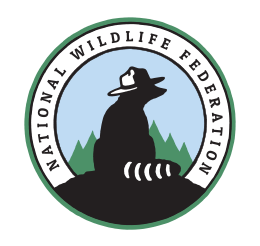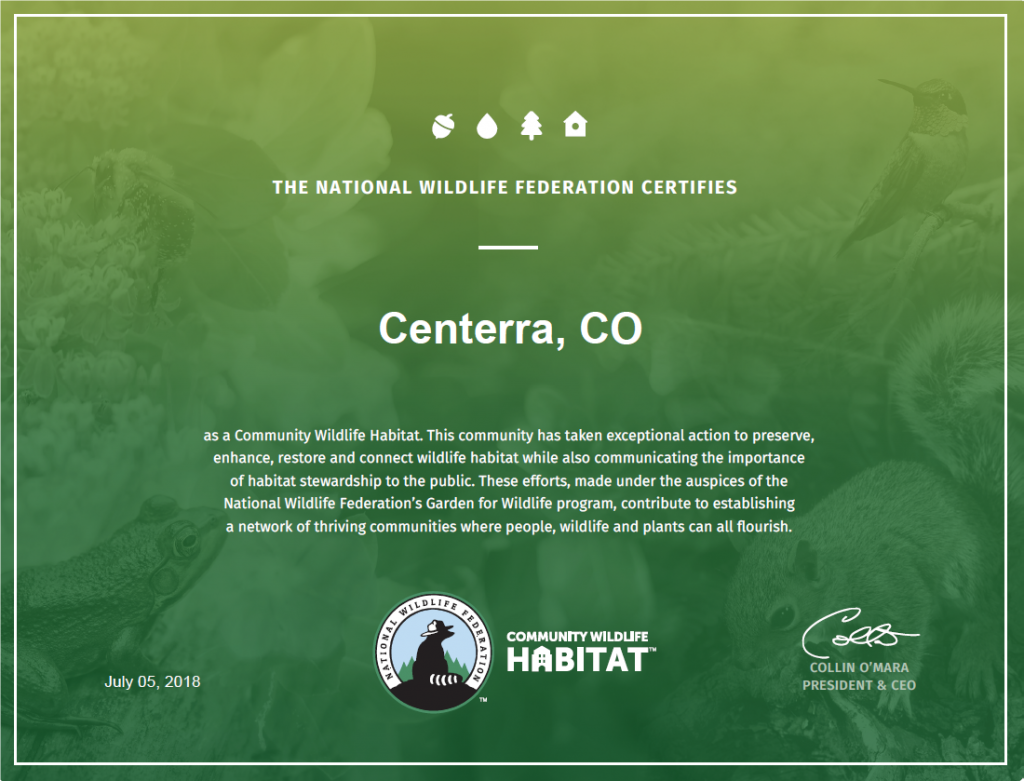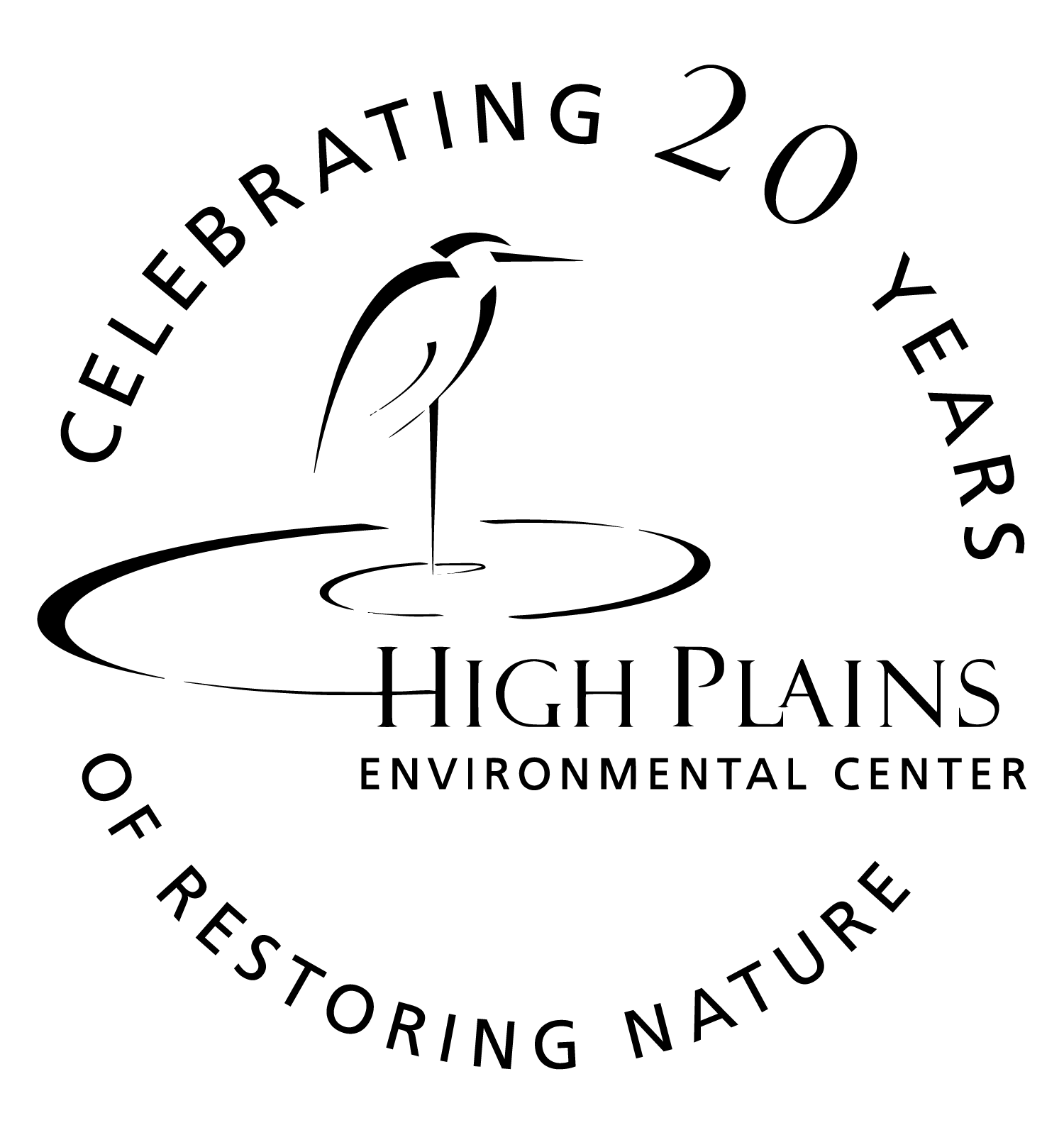High Plains Environmental Center
NWF Community Wildlife Habitat Program
CENTERRA REGISTERS AS THE FIRST NWF COMMUNITY WILDLIFE HABITAT™ IN COLORADO
Centerra, a 3,000‐acre master‐planned community in Loveland, Colo., in collaboration with the High Plains Environmental Center (HPEC), recently registered with The National Wildlife Federation (NWF) to become the first Community Wildlife Habitat™ in Colorado. The NWF Community Wildlife Habitat program, started in 1997, empowers citizen leaders to take action for wildlife in their own communities. The program provides these leaders with a framework to restore wildlife habitat and educate and engage community members while working to attain NWF’s esteemed certification as a wildlife‐friendly community.
Centerra’s long‐term commitment, with help from community partner HPEC, includes an action plan for sustainability and progressive community education. Together habitat for wildlife is preserved, open space is restored and maintained, and sustainable development and environment practices occur daily. These community development practices include reducing or eliminating the use of chemical pesticides, reducing nutrient run‐off from fertilizers, composting, conserving water, planting native plants, removing invasive plants, waste recycling and implementing low‐impact lighting. The immediate and ongoing goal of the NWF community registration is to certify in Centerra at least 50 home gardens, one school, local businesses, as well as continue to educate and partner with the surrounding lifestyle community to maintain stewardship.
Jim Tolstrup, High Plains Environment Center’s Executive Director said, “Few people realize how much habitat has been created and is maintained within Centerra. Aside from the 275‐acres that HPEC owns and manages there are an additional 250‐acres of native grass and man‐made wetlands in stormwater ponds within Centerra. That is 525‐acres of habitat intentionally designed and managed to provide connectivity for wildlife through our growing urban corridor and allows people who live, work, or visit Centerra, to interact with nature on a daily basis.”
To become an official Certified Wildlife Habitat, you need to provide food, water, cover and a place for wildlife to raise their young. You also need to garden in an environmentally responsible way. It’s that easy! I’ve included the criteria at the bottom of this email, or you can find out more details HERE. Once you meet the criteria, click the “Certify Now” button to apply online.
What food sources do I need to certify?
Your habitat needs three of the following types of plants or supplemental feeders: Seeds from a plant • Berries • Nectar • Foliage/Twigs • Nuts • Fruits • Sap • Pollen • Suet • Bird Feeder • Squirrel Feeder • Hummingbird Feeder • Butterfly Feeder
What water sources do I need to certify?
Your habitat needs one of the following sources to provide clean water for wildlife to drink and bathe: Birdbath • Lake • Stream • Seasonal Pool • Ocean • Water Garden/Pond • River • Butterfly Puddling Area • Rain Garden • Spring
What kind of cover should I provide?
Wildlife need at least two places to find shelter from the weather and predators: Wooded Area • Bramble Patch • Ground Cover • Rock Pile or Wall • Cave • Roosting Box • Dense Shrubs or Thicket • Evergreens • Brush or Log Pile • Burrow • Meadow or Prairie • Water Garden or Pond
How can I give wildlife a place to raise their young?
You need at least two places for wildlife to engage in courtship behavior, mate, and then bear and raise their young: Mature Trees • Meadow or Prairie • Nesting Box • Wetland • Cave • Host Plants for Caterpillars • Dead Trees or Snags • Dense Shrubs or a Thicket • Water Garden or Pond • Burrow
What sustainable gardening practices do I need to certify?
You should be doing two things to help manage your habitat in a sustainable way. Soil and Water Conservation: Riparian Buffer • Capture Rain Water from Roof • Xeriscape (water-wise landscaping) • Drip or Soaker Hose for Irrigation • Limit Water Use • Reduce Erosion (i.e. ground cover, terraces) • Use Mulch • Rain Garden. Controlling Exotic Species: Practice Integrated Pest Management • Remove Non-Native Plants and Animals • Use Native Plants • Reduce Lawn Areas. Organic Practices: Eliminate Chemical Pesticides • Eliminate Chemical Fertilizers • Compost

Our Progress
Centerra has become the First Official Community Wildlife Habitat in the State of Colorado! Thank you to all of the community members, HPEC staff, and our partner McWhinney for helping to conserve land, water, and wildlife in our own backyard!

